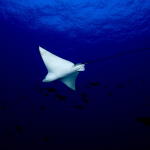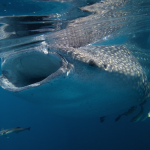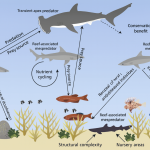The Arabian Gulf is a cradle of marine biodiversity. Beyond its sandy shores and bustling ports lies a complex underwater realm, home to an array of shark species. If you’ve ever wondered how to better understand and appreciate these often-misunderstood apex predators, the “Sharks of the Arabian Gulf Guidebook” is your perfect companion. Whether you’re a recreational diver, marine biologist, or simply a curious traveler, this guide provides clear, engaging, and scientifically grounded information. And don’t forget to visit gulfelasmoproject.com for latest info and updates on ongoing shark research in the region.
Sponsors

Why the Arabian Gulf’s Sharks Matter
Sharks play a pivotal role in marine ecosystems worldwide, and the Arabian Gulf is no exception. Here are a few reasons why they deserve our attention:
- Ecological Balance
Sharks help regulate fish populations, preventing any single species from overwhelming the reef systems. Without them, we could see rapid declines in coral health and seagrass meadows. - Indicator Species
Because sharks sit at the top of the food chain, changes in their numbers or health often signal broader shifts in ocean conditions—pollution, overfishing, or climate change. - Cultural and Economic Value
In many Gulf communities, sharks feature in local legends, artisan crafts, and even ecotourism ventures. Responsible shark-watching dives can generate sustainable income for coastal towns.
What You’ll Find in the “Sharks of the Arabian Gulf Guidebook”
This guidebook is organized to take you seamlessly from basic orientation to in‐field application:
- Section 1: Introduction to Gulf Ecology
Understand the unique physical and chemical characteristics of the Arabian Gulf: high salinity, seasonal temperature swings, and unique reef formations. - Section 2: Shark Identification Keys
Learn to distinguish the most common species:- Blacktip Reef Shark (Carcharhinus melanopterus)
- Whale Shark (Rhincodon typus)
- Gray Reef Shark (Carcharhinus amblyrhynchos)
- Spadenose Shark (Scoliodon laticaudus)
- Bamboo Shark (Chiloscyllium arabicum)
- Section 3: Behavior and Habitat
Discover where and when to find these creatures:- Shallow lagoons vs. deep channels
- Daytime resting sites vs. nocturnal hunting grounds
- Seasonal migration patterns along the Gulf coast
- Section 4: Safe and Ethical Shark Encounters
Practical advice for divers, snorkelers, and boaters to minimize stress on animals and reduce risk to humans. - Section 5: Conservation Status and Threats
An overview of pressures facing Gulf sharks:• Bycatch in commercial fisheries • Coastal development and habitat loss • Pollution hotspots near urban centers • Illegal shark finning - Section 6: Citizen Science and How to Help
Simple protocols for reporting sightings, logging photos, and joining local tagging programs.
Getting Started: Shark Identification Cheat Sheet
To make identification in the field a breeze, the guidebook includes a one‐page quick reference:
| Species | Key Features | Typical Depth |
|---|---|---|
| Blacktip Reef Shark | Black-tipped fins, slender body | 0–20 m |
| Whale Shark | Spotted pattern, broad head | 5–30 m |
| Gray Reef Shark | Rounded dorsal fin, robust build | 10–50 m |
| Spadenose Shark | Short, shovel-shaped snout | 0–15 m |
| Bamboo Shark | Barred pattern, bottom-dweller | 5–25 m |
5 Steps to a Responsible Shark Dive
- Plan Ahead
- Check local guidelines and protected area regulations.
- Research seasons—some species congregate only at certain times of year.
- Gear Up Correctly
- Use neutral buoyancy techniques; avoid sudden movements.
- Secure loose equipment to prevent accidental snagging.
- Approach Calmly
- Maintain at least 3–4 meters distance.
- Let the shark decide whether it wants to approach you.
- Minimize Flash Photography
- Bright strobes can startle or stress sharks.
- Whenever possible, rely on natural light.
- Log Your Encounter
- Note date, time, location (GPS if available), species, and behavior.
- Upload your data and photos to local citizen science platforms or the GulfElasmoProject team.
Real-Life Stories: Field Notes from Gulf Researchers
Dr. Aisha Al-Mansouri, lead marine biologist on a recent expedition:
“Last November, we observed a small pod of whale sharks near Sir Abu Nu’ayr Island. Watching these gentle giants feed on plankton was astonishing—they moved with deliberate grace, completely undisturbed by our presence. Our guidebook’s protocols helped everyone remain calm, and the sharks eventually passed so close we could see the subtle flick of their gills.”
How to Contribute: Citizen Science in Action
Even if you’re not a professional diver, you can make a difference. Here’s how:
- Snap and Submit
Use apps like iNaturalist or local reporting forms to share geotagged photos. - Volunteer Workshops
Join beach cleanups and tagging workshops organized by local NGOs. - Spread the Word
Bookmark the “Sharks of the Arabian Gulf Guidebook” and share the link on social media. Encourage fellow beachgoers to learn safe shark‐friendly practices.
Frequently Asked Questions
Q1: Are Gulf sharks dangerous to humans?
A: Incidents are extremely rare. Most species are timid and avoid divers. Following the dive guidelines in the guidebook practically eliminates risk.
Q2: What is the best time of year to see reef sharks?
A: Spring and fall, when water clarity and plankton blooms attract feeding schools.
Q3: How accurate are citizen-submitted sightings?
A: With photo evidence and basic metadata (date, location), researchers can validate most reports. The guidebook teaches you how to collect reliable data.
The Bigger Picture: Conservation Outcomes
Thanks to pooled data from recreational divers, fishermen, and research teams:
- Three new Marine Protected Areas were proposed along the UAE coast.
- Fisheries management now incorporates seasonal shark closures to protect breeding populations.
- Educational programs in schools have integrated shark conservation into their curricula, fostering the next generation of marine advocates.
Final Thoughts
Sharks of the Arabian Gulf are more than just apex predators—they are guardians of marine health and symbols of ecological resilience. With the “Sharks of the Arabian Gulf Guidebook” in hand, you’re equipped to explore responsibly, contribute valuable data, and become an advocate for these remarkable creatures. Remember to visit gulfelasmoproject.com for latest info on expeditions, new research findings, and upcoming citizen‐science events.
Dive in wisely, observe respectfully, and help ensure that these ancient mariners continue to patrol the Gulf’s waters for generations to come.






